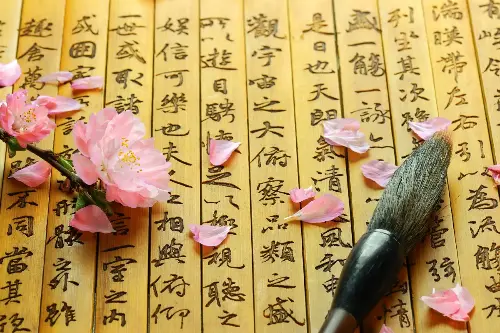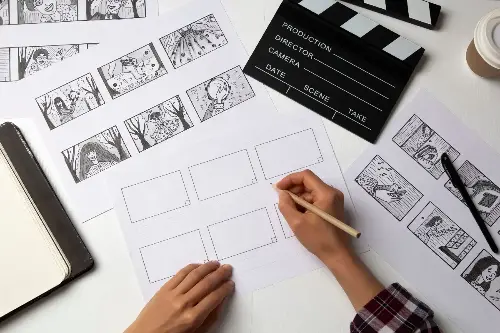With each thud of a human heart, a story beats. Since time immemorial, storytelling has been the lifeblood of human existence. It has the power to hold up a mirror to our society, whisper our most profound fantasies, and paint the broad strokes of our relentless pursuit for truth. Across every campfire, under the canopies of forests, within the walls of palaces and hovels, stories have resonated, carrying the weight of human experience from one generation to the next.

Echoes from Ancient Pages
The cave paintings of Lascaux are more than mere images; they tell tales of survival, of beasts conquered, and of the elements endured. They are the first known evidence of humanity’s need to express and share experiences. As time progressed, so did the complexity of our stories. Hieroglyphs in Egypt evolved from decorative to convey the grandiose exploits of pharaohs, while Greek mythology explained the whims of the gods through epic narratives like Homer's "Odyssey," etching legends into the annals of time.
The Oral Tradition: Stories on the Wind
Before the widespread use of writing, oral tradition was the posterity of knowledge and culture. Awe-inspiring tales were weaved with words and melodies that would soar through the ages like wind through the trees. These stories, embedded with life lessons, were recounted from parent to child, from one traveler to another, creating a shared consciousness that bonded communities. Bards, griots, and shamans were the celebrated bearers of these cultural codes, revered for their role in preserving the collective heritage.
Scripted Wisdom: The Written Word
The advent of writing transformed storytelling, giving it a form that could withstand the erosion of memory and time. It enabled the documentation of not just what was to be remembered, but how it was remembered. Scribbled on papyrus, etched on stone, or printed on paper, written stories began to bridge the divide between civilizations, spread religious doctrines, and fuel revolutions. From the philosophical enquiries of Plato to the poignant plays of Shakespeare, the written word became the edifice on which modern civilisations were built.

Books of Boundless Realms
The printing press democratized storytelling. It empowered authors to reach audiences far beyond their geographic and temporal boundaries. Adventure, fantasy, and science fiction genres created universes filled with endless possibilities, showing us that the realm of stories is as boundless as the human imagination. Tolkien's "Middle-earth," Lewis Carroll's "Wonderland," or J.K. Rowling's "Wizarding World" are not merely places of escapism but are intricately designed ecosystems where complex societal issues can be explored.
Storytelling in the Digital Age
The Internet has ushered in a new chapter in the annals of storytelling. Digital platforms have dissolved the barriers of entry, allowing anyone with a story and connectivity to share their voice with the world. This has given rise to new forms of narratives, such as blogs, podcasts, and viral videos, each evolving the art of storytelling. Themes of decentralization of power, collective narratives, and cross-cultural exchange take center stage in the boundless digital narrative space.
The Heartbeat of Our Lives: Personal Tales
In the shared human journey, personal stories pulsate the strongest. They are the day-to-day anecdotes that might not be chronicled in the pages of history, but they form the very fabric of our lives. They are about the love letters tucked away in old shoeboxes, the resilience in the face of adversity, and the twist of fate that joins two paths in serendipity. Through these smaller, intimate narratives, we find connections in our shared human emotions—joy, sorrow, hope, and fear.

Illuminating the Dark: Storytelling as a Tool for Change
Stories have the paramount power to illuminate the dark corners of society, holding a torch to injustice, inequality, and oppression. Writers like Harriet Beecher Stowe with "Uncle Tom's Cabin" or George Orwell with "1984" played pivotal roles in catalysing public opinion and reform. Modern storytellers continue to harness this power, exposing truth and advocating change through films, documentaries, and social media campaigns.
A Tapestry Woven Across Time
Storytelling is the continuous thread that weaves through the tapestry of humanity. It is not bound by the transient nature of existence but transcends lifetimes, allowing us to converse with the past and influence the future. Like the heartbeat of humanity, storytelling thrives in its rhythm—sometimes soft and subtle, at other times urgent and vibrant. It carries legends, fantasies, and truths, binding us in a shared narrative that stands as testimony to our collective spirit and resilience.
Through storytelling, we affirm our existence and leave echoes that will ripple through the hearts of generations to come, a legacy imprinted not in stone but in the very soul of humanity. The stories we share today become the bedrock of tomorrow's culture, shaping the world in ways we can scarcely imagine. And so, we continue to tell our tales, add our own threads to the rich tapestry, and ensure the heartbeat of humanity beats on, strong and unwavering, as it has since our ancestors first painted the walls of a starlit cave.